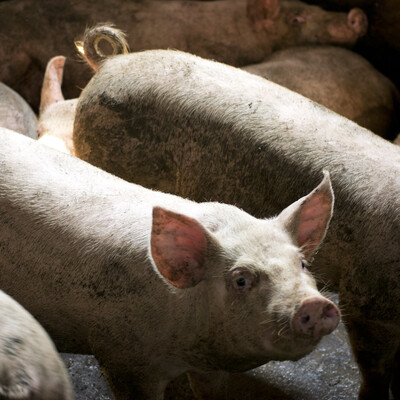
Towards eradicating rabies in Kenya: One Health Centre in Africa supports vaccination campaign in Machakos
The International Livestock Research Institute led One Health Centre in Africa (OHRECA) in partnership with Machakos County government, the Zoonotic Disease Unit (ZDU) and Vétérinaires Sans Frontières-Germany (VSF-G) have launched a rabies vaccination campaign in Machakos County as part of an effort to eliminate rabies in Kenya by 2030.
Running between 7 and 24 December 2020, the campaign aims to vaccinate 10,000 dogs in the Kola and Kalama wards of Machakos County, which, according to the World Health Organization, is among the most heavily burdened by rabies in Kenya. During this period veterinarians and volunteers will also create awareness about the disease among residents in the two wards.
Rabies is a zoonotic viral disease that is spread to humans through an animal bite. The virus spreads to people from the saliva of the infected animal causing swelling of the brain in humans and other mammals and has no treatment.The disease is 100% fatal. In other parts across the world, animals such as foxes, skunks, racoons and coyotes can also cause rabies. Globally, 59,000 people are killed by the deadly zoonotic disease with 95% of these deaths occurring in Africa and Asia.
In Kenya, 2,000 people lose their lives every year to rabies. Most of the victims are children aged 5-14 years in rural villages. Located 60 kilometres southeast of Nairobi, Machakos is among the top five counties with the highest reported cases of dog bites on humans in Kenya. Rabies is 100% preventable through effective vaccinations. Vaccinating a dog against rabies is cheaper than treating a person exposed to rabies. In Kenya, a complete regimen of treatment for rabies costs about USD 85 per person while vaccinating a dog cost about USD 2.
‘There are 259,000 dogs in Machakos County, we want to make sure that all of them are immunized against rabies,’ said David Waweru, the Machakos County director of veterinary services, at the start of the campaign. ‘Bites from vaccinated dogs have almost zero chance of transmitting the deadly rabies disease to people. That’s why we are enthusiastic and passionate about this particular exercise,’ he said.
The ZDU have rolled out a strategy for eliminating rabies by 2030. The strategy focuses on multisectoral and interdisciplinary efforts to ensure effective surveillance of the disease in humans and animals, promoting better public awareness through community engagements, and improving access to human rabies vaccines in rural environments. The on-going rabies vaccination campaign in Machakos falls under this strategy.
This vaccination campaign has been funded by the German Federal Ministry of Economic Cooperation and Development (BMZ) through OHRECA.
Click here for more information on dog ecology and demography information to support the planning of rabies control in Machakos County, Kenya
More information on comparison of vaccination strategies for the control of dog rabies in Machakos can be found here
Read a related publication on a ‘Volunteer-based approach to dog vaccination campaigns to eliminate human rabies: Lessons from Laikipia County, Kenya.’















